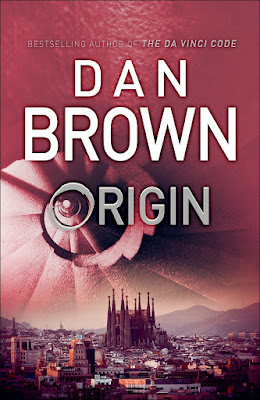There is something special about
the works of Dan Brown. One of the few authors whose works of fiction I devour
with passion, Dan Brown has mastered the art of writing what I would call ‘encyclopedic
thrillers’. Between those covers lie a huge trove of details about history,
art, religion and science. Every time I finish reading a book by him, I end up
adding at least 2-3 books to my to-read list. Such an awe-inspiring author he
is. However, this book turns out to be one of his disappointing efforts.
Edmond Kirsch is a billionaire
computer scientist and futurist who has discovered something that could end up
disturbing the deeply-seated religious beliefs. Robert Langdon, one of his trusted
friends, gets invited to the event in Guggenheim museum for the announcement of
that discovery. In front of the entire audience, Edmond gets brutally murdered
before he could announce his discovery. Robert Langdon, having prominently figured
in his pre-presentation video, and Ambra Vidal, the charming director of the
museum, who worked closely with Edmond to prepare for the event, are both left
to run for their dear lives. Chased by what appears to be the conspiracy to
eliminate every loose end, Robert and Ambra race through the architectural and
historical monuments of Spain to find out Edmond’s discovery and let it be
known to the world. Did they succeed? This book answers the question.
As I already said, Dan Brown is
an author who weaves a lovely tapestry of tales, putting together facts from
various faculties – science, history, art, architecture, religion and what-not!
His ability to weave an intricate tale is never to be doubted. But somehow in
this book, they are all starting to sound so routine and to some extent even
hampering the flow. Brown seems to be settling into a pattern which is not good.
What worked in Angels and Demons will not work always. Robert Langdon running
for his dear life, trying to unravel the mysteries, accompanied by a female
protagonist, giving us lessons on history and religion - it is all starting to
sound so similar. Time to think of something different?
Again, neither the story nor the
ending are what used to set apart Dan’s works. If you’re a fan of Hollywood
movies, who also happens to read widely about science and technology, you get
to predict the antagonist and the climax well in advance – at about 200 pages itself.
Once the suspense is gone, what remains is another 250-odd pages of dull and
uninspiring reading. Either Dan Brown has become predictable or I have gathered
the uncanny knack of Sherlock Holmes in seeing beyond the obvious. To avoid
sounding so boastful, I guess it is the former that is the case.
Routine, predictable and sluggish, this book reminds me of a work by Shakespeare – Much Ado About Nothing!




